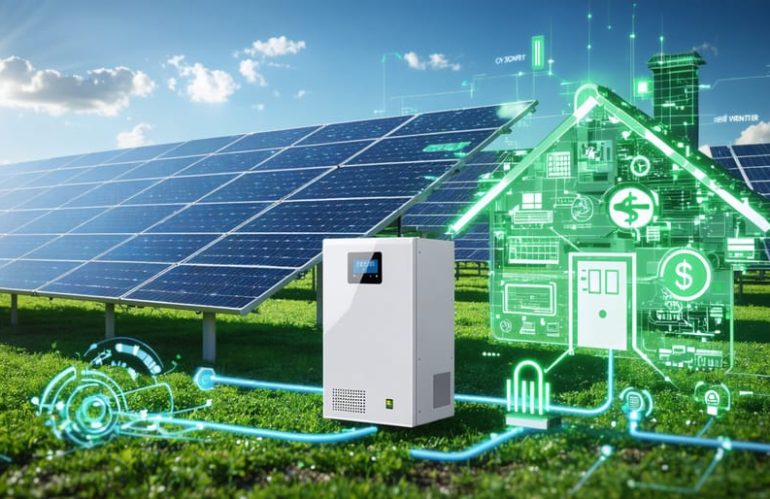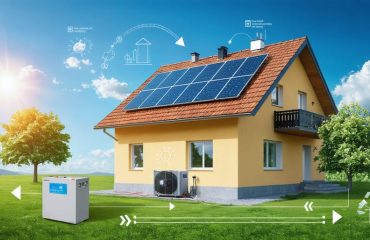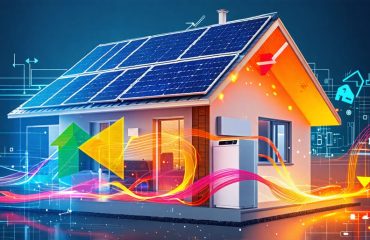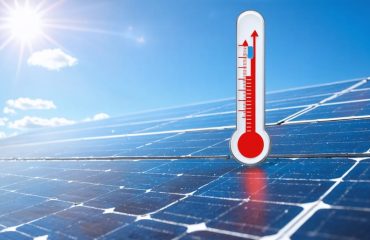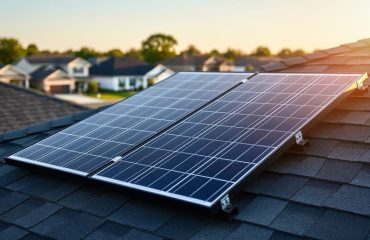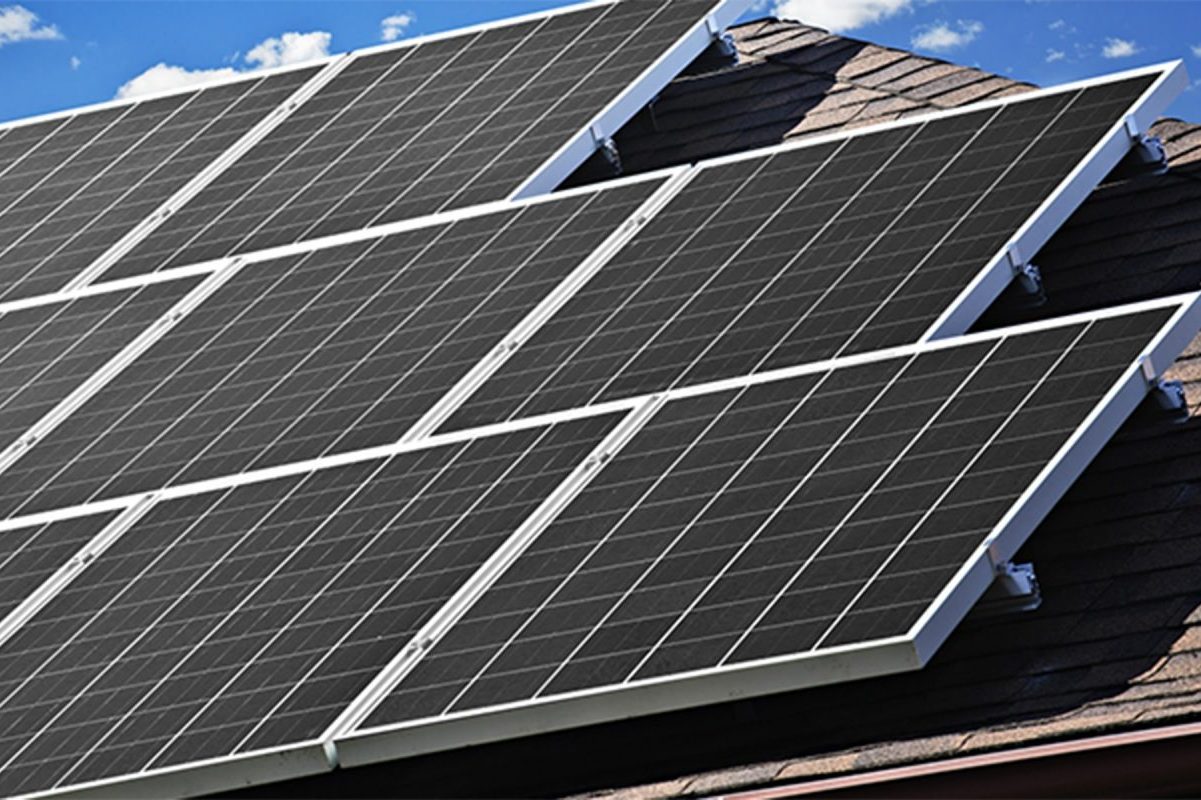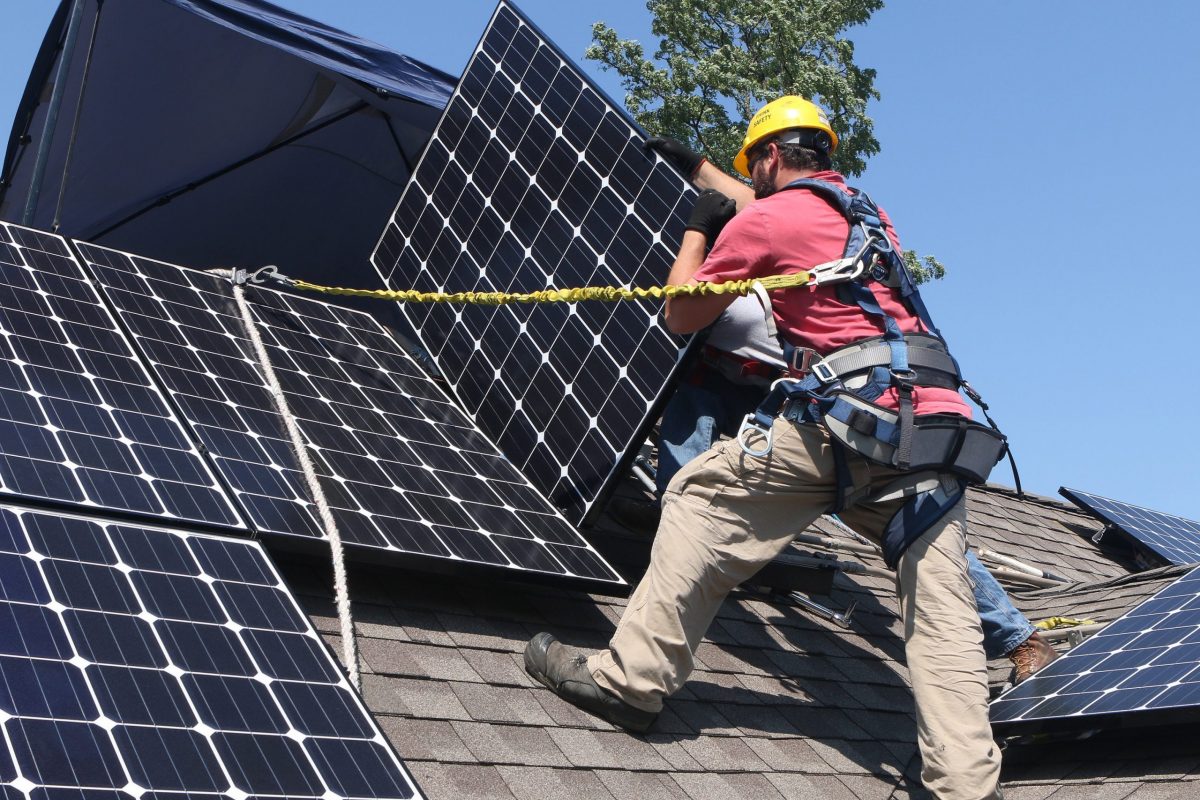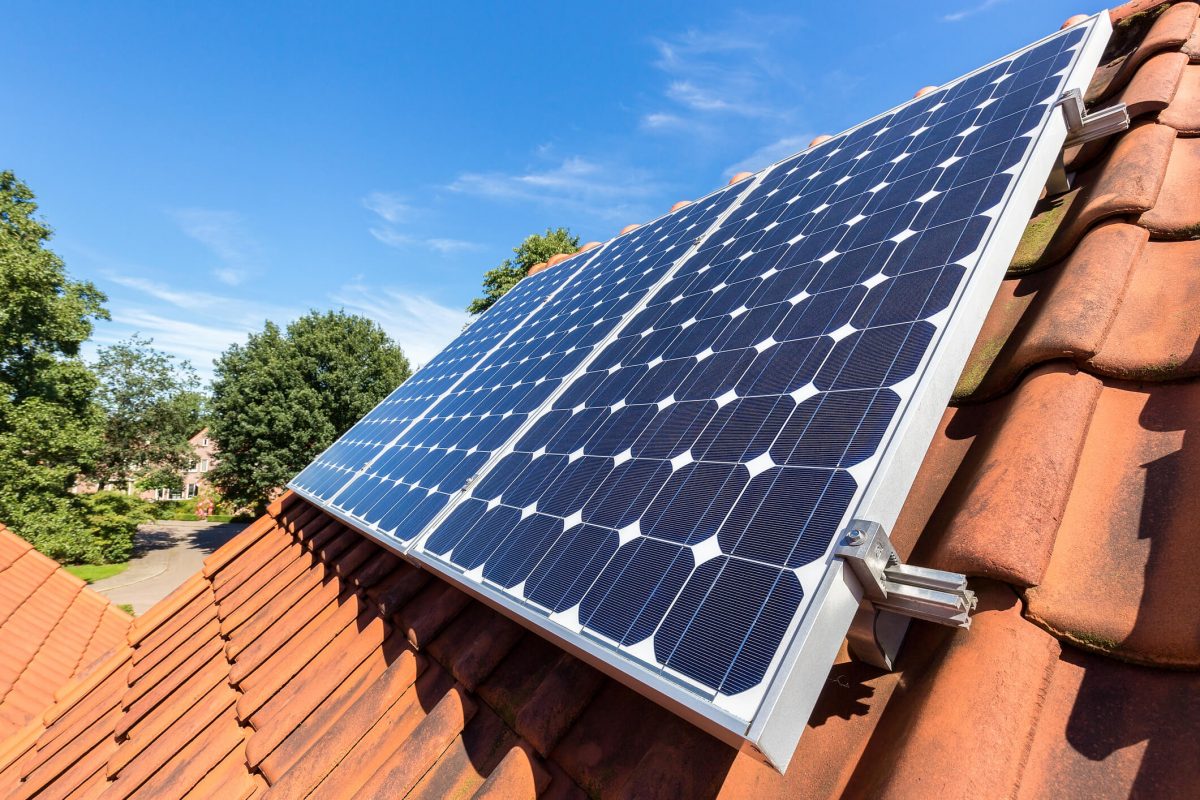Inverter efficiency stands as the cornerstone of solar power system performance, directly impacting how much of your solar panels’ generated electricity actually powers your home. Modern solar inverters achieve impressive conversion rates of 95-98%, translating into substantial energy savings and faster returns on investment. Yet this critical component often remains overlooked when homeowners plan their solar installations.
Understanding inverter efficiency isn’t just about technical specifications – it’s about maximizing your solar investment and environmental impact. Every percentage point improvement in inverter efficiency can save hundreds of dollars annually on electricity bills while reducing your carbon footprint. For a typical 6kW residential solar system, the difference between a 95% and 98% efficient inverter could mean an additional 650 kWh of usable energy per year – enough to power an average home for three weeks.
As solar technology continues to advance, choosing the right inverter has become increasingly crucial for system performance. Whether you’re considering microinverters, string inverters, or hybrid solutions, understanding efficiency ratings and their real-world impact empowers you to make informed decisions that optimize your solar investment for decades to come.
How Solar Inverters Transform Your Power
DC to AC: The Conversion Process
The heart of your solar power system lies in how it transforms the solar panel voltage output into usable household electricity. While your panels generate direct current (DC) power, your home appliances need alternating current (AC) power to function. This is where inverters work their magic.
Think of an inverter as a translator for electricity. It takes the steady flow of DC power and converts it into a wave-like AC pattern that matches your home’s electrical system. This process happens in three main steps: First, the inverter receives DC power from your solar panels. Then, it uses electronic switches to chop up this steady current into segments. Finally, it reshapes these segments into a smooth sine wave that perfectly mirrors your utility power.
Modern inverters perform this conversion with remarkable precision, ensuring your appliances receive the exact type of power they need. The best part? This entire process happens automatically and continuously, requiring no input from you while delivering clean, reliable power to your home.
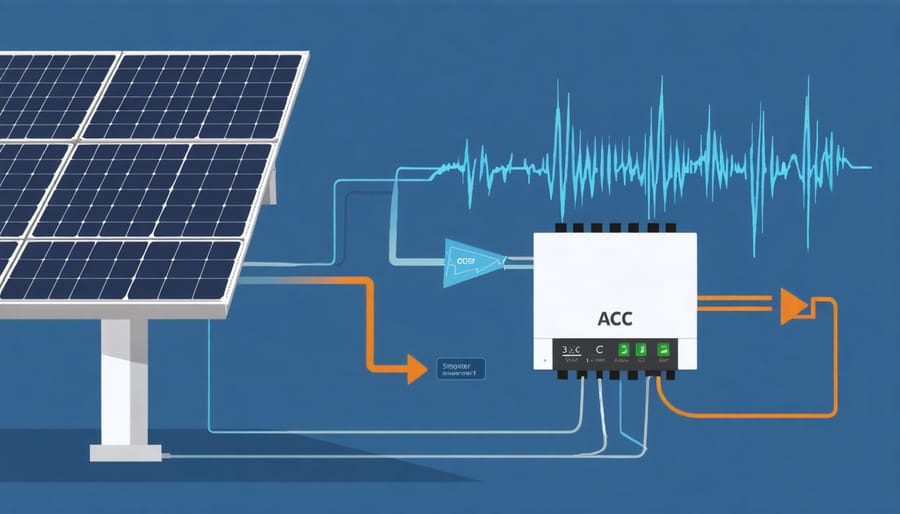
Why Every Percentage Point Matters
When it comes to solar inverter efficiency, even small differences can have a significant impact on your system’s overall performance and financial returns. A seemingly minor 2% difference in efficiency between inverters can translate to hundreds of dollars in energy savings over the system’s lifetime. For example, if your solar system generates $1,000 worth of electricity annually, an inverter with 98% efficiency versus 96% efficiency would save you an extra $20 each year – that’s $500 over 25 years!
These percentage points become even more crucial for larger solar installations. For commercial systems or extensive residential arrays, the financial impact multiplies substantially. Higher efficiency also means your solar panels work more effectively, converting more of the sun’s energy into usable electricity for your home.
Think of inverter efficiency like a leaky bucket – every drop of water (or in this case, energy) that escapes represents money lost. By choosing a high-efficiency inverter, you’re essentially using a better bucket that keeps more of your valuable energy working for you.
Key Factors That Impact Inverter Efficiency
Temperature Effects
Just as temperature affects solar performance, it also plays a crucial role in how efficiently your inverter operates. Most solar inverters work best when kept between 77°F and 95°F (25°C to 35°C). When temperatures rise above these levels, inverter efficiency can drop significantly, potentially reducing your system’s overall power output.
To maintain optimal efficiency, proper inverter placement is essential. Installing your inverter in a cool, shaded area away from direct sunlight can help prevent overheating. Common installation locations include garages, basements, or shaded exterior walls on the north side of your home. Ensure there’s adequate ventilation around the unit, with at least 6 inches of clearance on all sides.
Some modern inverters come with built-in cooling systems and temperature monitoring features. These smart features help maintain stable performance even during hot weather by adjusting operation parameters or triggering cooling fans when needed. During winter, extremely cold temperatures can also affect inverter performance, though less severely than heat. Most quality inverters are designed to operate effectively in temperatures as low as 14°F (-10°C).
When planning your solar installation, discuss temperature considerations with your installer to determine the best location for your inverter that balances accessibility for maintenance with optimal operating conditions.
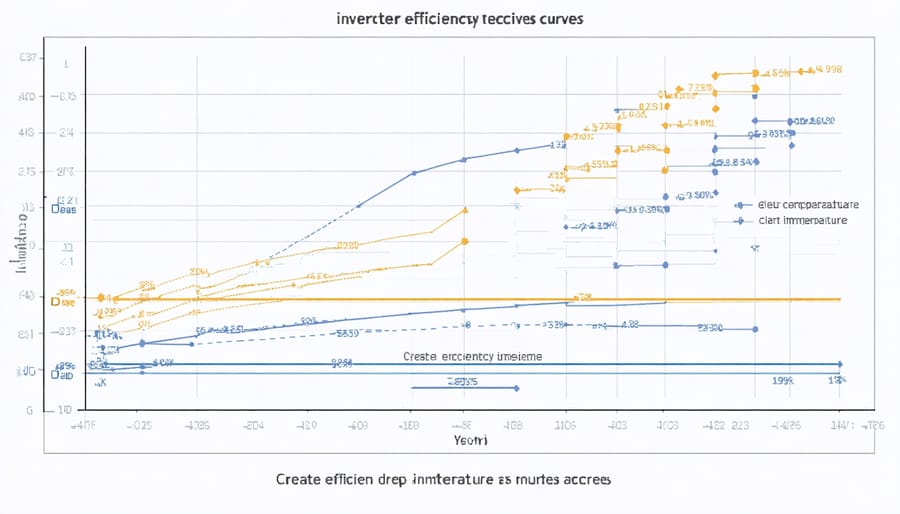
Load Conditions
Your solar inverter’s performance changes based on how much power your home needs at any given time. Think of it like a car’s fuel efficiency – it works best within certain speeds, not necessarily at full throttle or crawling along. Most inverters reach their peak efficiency when operating at 50-90% of their rated capacity.
During bright, sunny days when your solar panels are producing lots of power, your inverter might be working at full capacity. However, in early mornings, late afternoons, or on cloudy days, it’ll be operating at partial load. This variation affects overall efficiency.
Modern inverters are designed to handle these fluctuations better than older models. They use sophisticated power management systems to maintain high efficiency even at lower power levels. Some can even shut down parts of their circuitry when operating at very low loads to save energy.
To maximize your system’s performance, it’s important to choose an inverter sized appropriately for your typical power needs. An oversized inverter might seem like a good idea, but it could actually reduce overall efficiency if it frequently operates at low loads. Similarly, an undersized inverter might limit your system’s potential during peak production times.
Consider your daily power consumption patterns when selecting an inverter. If you typically use most of your electricity during non-peak solar hours, battery storage might be worth considering to better match your load conditions with solar production.
Choosing the Right Inverter for Your Home
Efficiency Ratings Explained
When shopping for solar inverters, you’ll often encounter three main efficiency ratings: CEC, Euro-efficiency, and peak efficiency. Each tells a different story about how well an inverter performs under various conditions.
Peak efficiency represents the highest possible performance level an inverter can achieve under ideal conditions. While impressive on paper, these perfect conditions rarely occur in real-world situations. Think of it like a car’s maximum speed – while it’s good to know, you’ll rarely drive at top speed.
CEC efficiency (California Energy Commission) is widely used in North America and provides a more realistic picture of performance. It measures how well an inverter operates across different power levels, weighted to reflect typical solar conditions in the United States. This rating is particularly valuable for homeowners because it better represents actual daily performance.
Euro-efficiency, developed for European markets, uses a similar weighted approach but is adjusted for European weather patterns. It tends to emphasize lower power levels more than CEC ratings, reflecting the generally cloudier conditions in Europe.
For most homeowners, CEC efficiency is the most relevant metric when comparing inverters. Modern solar inverters typically achieve CEC efficiency ratings between 95% and 98%. While a difference of 2-3% might seem small, it can significantly impact your system’s energy production over its lifetime. For example, a 1% efficiency improvement in a 10kW system could mean hundreds of additional kilowatt-hours of energy production annually.
When evaluating inverters, look for CEC efficiency ratings above 96% for optimal performance and long-term energy savings.
Size and System Matching
Getting the right balance between your solar panels and inverter is crucial for maximizing your system’s efficiency. Like a well-choreographed dance, your inverter needs to match your solar array’s output perfectly. This starts with proper system sizing during the initial planning phase.
A common misconception is that bigger is always better, but oversizing your inverter can actually lead to reduced efficiency and unnecessary costs. Ideally, your inverter’s capacity should be about 75-100% of your solar array’s power rating. This sweet spot ensures optimal performance while accounting for factors like seasonal variations and panel degradation over time.
For example, if you have a 6kW solar array, an inverter rated between 4.5kW and 6kW would typically provide the best efficiency. This sizing principle allows your inverter to operate at its peak efficiency range more frequently, maximizing energy conversion throughout the day.
Consider your future needs as well. If you’re planning to expand your solar system later, you might want to choose an inverter with slightly higher capacity. However, be careful not to go too large, as an oversized inverter will operate below its optimal efficiency range most of the time.
Climate and location also play important roles in sizing decisions. Areas with intense sunlight might benefit from a slightly lower inverter-to-panel ratio, while cloudy regions might need closer to a 1:1 ratio for optimal performance. Working with a qualified solar installer can help ensure you get the right match for your specific situation.
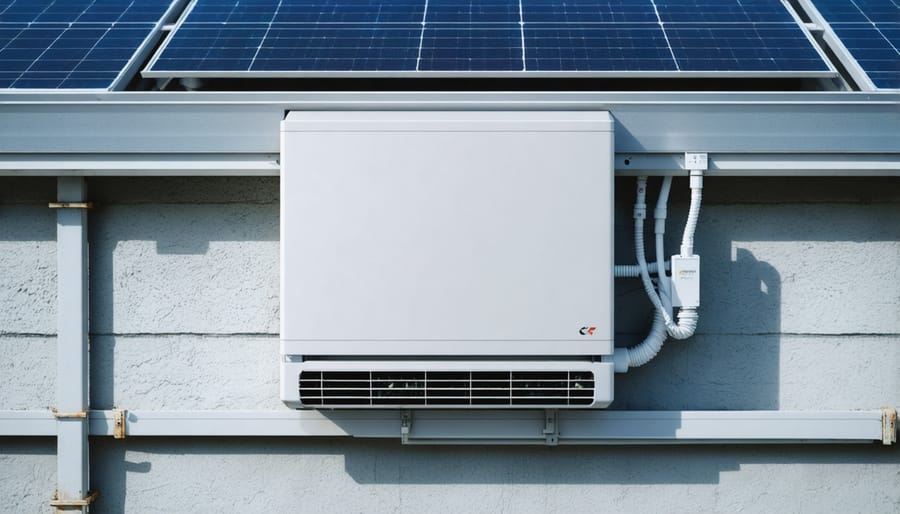
Maximizing Your Inverter’s Performance
To maximize solar system performance, proper inverter maintenance and optimization are essential. Here are several practical steps you can take to keep your inverter running at peak efficiency:
First, ensure proper ventilation around your inverter. Heat is the enemy of efficiency, so maintain at least 6 inches of clearance on all sides of the unit. Keep the area clean and free from dust, leaves, and debris that could obstruct airflow or cause overheating.
Regular monitoring is crucial. Check your inverter’s display panel daily if possible, noting any unusual readings or error messages. Many modern inverters come with smartphone apps that make this task easier, allowing you to track performance remotely and receive instant notifications of any issues.
Protect your inverter from extreme weather conditions. While most units are weather-resistant, providing additional shelter from direct sunlight and rain can extend their lifespan and maintain efficiency. Consider installing a simple awning or cover if your inverter is mounted outdoors.
Clean the cooling fins and vents monthly using a soft brush or compressed air. This simple maintenance task helps prevent dust buildup that could impact cooling efficiency. However, always turn off the inverter before cleaning to ensure safety.
Check and tighten all electrical connections annually, preferably with the help of a qualified professional. Loose connections can create resistance that reduces efficiency and potentially poses safety risks.
Update your inverter’s firmware when available. Manufacturers regularly release updates that can improve efficiency and add new features. Many modern inverters can update automatically when connected to the internet.
Consider scheduling professional maintenance checks every 2-3 years. A certified technician can perform detailed diagnostics and identify potential issues before they affect performance. This proactive approach helps maintain optimal efficiency throughout your inverter’s lifetime.
Investing in a high-efficiency solar inverter is crucial for maximizing your solar system’s performance and financial returns. By choosing the right inverter, you can boost energy production by up to 10% and significantly reduce your electricity bills. Remember to consider factors like warranty coverage, smart monitoring capabilities, and compatibility with your specific solar setup when making your selection. Regular maintenance and professional installation will help ensure your inverter operates at peak efficiency throughout its lifespan. Take the time to research different options, compare efficiency ratings, and consult with qualified solar professionals to make an informed decision. With the right inverter in place, you’ll be well on your way to achieving optimal solar energy production and maximum savings for years to come.

